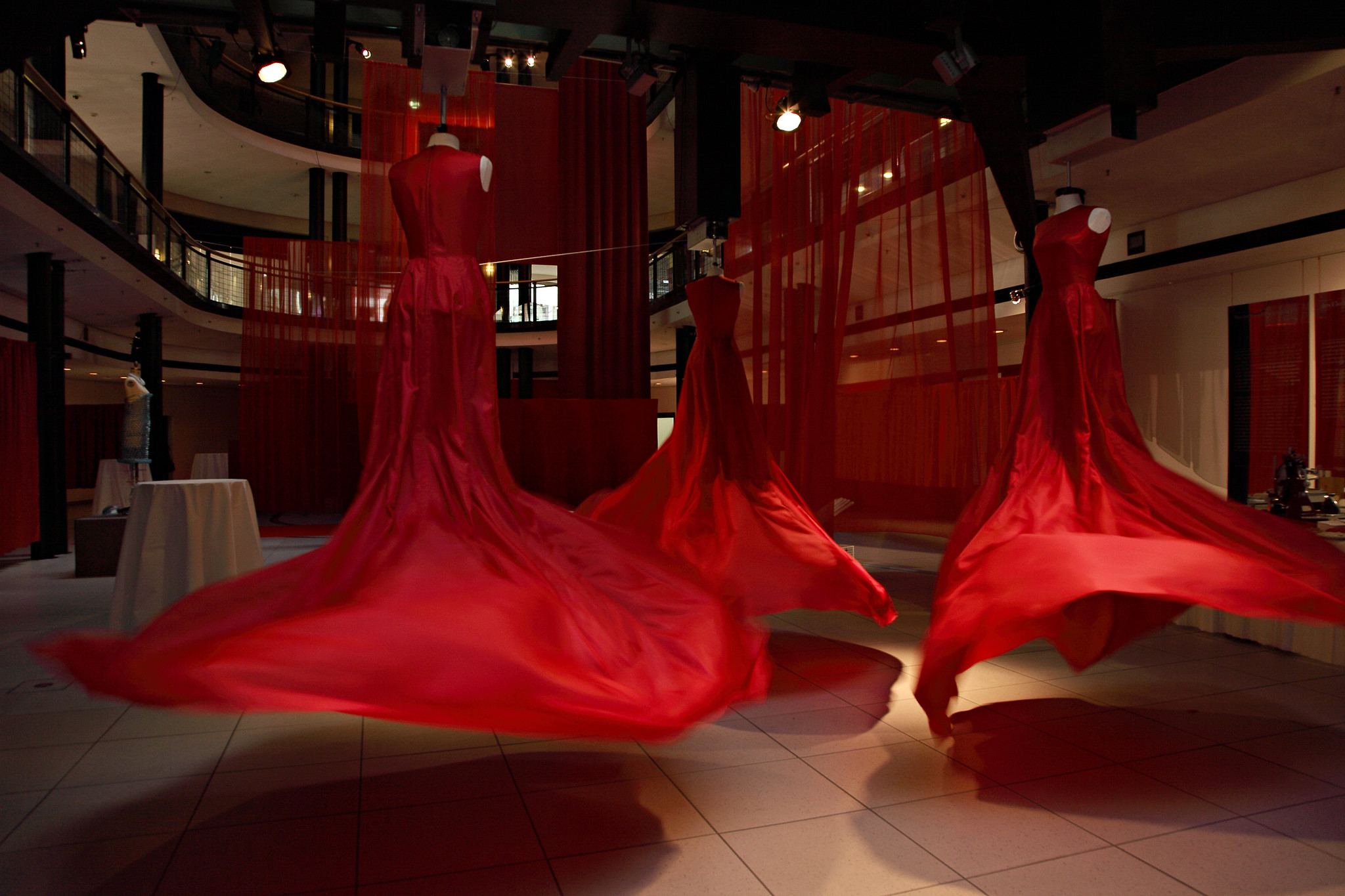Following last year’s successful “Poetry of Motion” show, Ars Electronica has been invited back for another guest appearance at Automobil Forum Unter den Linden in Berlin. The exhibition being produced in cooperation with Volkswagen AG is entitled “What Machines Dream Of.” It will feature 14 works by 11 internationally renowned artists and Ars Electronica Futurelab staffers.
Type: Exhibition
Duration: July 7 – August 28, 2011
City, Country: Berlin, Germany
Venue: Automobilforum Unter den Linden, Volkswagen AG

Humankind has been building machines for millennia. But aside from the fact that deploying them makes some truly difficult tasks a lot easier or makes it possible to complete them in a fraction of the time, machines have always exerted a fascination all their own upon us, a fascination that raises interesting questions about the timeless motivations behind our strivings to create new automatons, robots and androids. Is it the urge not only to comprehend nature and its processes but also to recreate them? Or perhaps even our audacious pretensions to be capable of improving on the world as it is? Do we construct artificial devices in response to the boundaries we feel have been imposed upon us—to shift them outward or, if we can, abolish them altogether? Or is it simply our boundless curiosity that demands to be satisfied?
When we think of machines, our most immediate associations are with wheezing, throbbing mechanical equipment driven by steam, a diesel engine or electrical current, apparatuses that incessantly, autonomously and precisely accomplish what they’re supposed to and generate an incredible amount of power in doing so. But what would be if all of these tirelessly working machines all suddenly shifted into neutral? If they stood still for a fraction of a second or lay down atop one of civilization’s scrap heaps and waited to be recycled? What might they dream of then? If we take a moment to ponder this essentially preposterous idea, we are confronted by images and narratives that tell us less about the machines than about ourselves. About the fantasies, wishes and fears we associate with progress and the ever-accelerating technological development we continue to push forward.

14 Works by Artists from Europe and the USA
“What Machines Dream Of” is a collection of art-machines that have little in common with their industrial and commercial counterparts. Here, there’s no trace of rationality, perfection or efficiency-optimizing logic. This show presents machines and robotic apparatuses that don’t produce a single thing besides the stories they have to tell us. And even if no machine in the world will ever come close to equaling what nature is capable of creating, every single one of them is nevertheless impressive testimony to humankind’s striving to discover, to comprehend and to master the world around us. A total of 14 works by renowned artists from Europe and the USA span an arc that includes futuristic design projects, ironically witty mechanical apparatuses and purportedly offbeat visions of the future that, as a rule, come true sooner rather than later. All these works are on display in a giant red-walled labyrinth that visitors reach via escalator. There they’ll find a dreamlike world in which every change of direction opens up new perspectives, new outlooks and insights. And they constrain visitors to go with the flow, to move from one space to the next, from exhibit to exhibit, until the labyrinth sets the visitors free again and they’re at liberty to move up to the next level. Here, the twists and turns continue but in a most surprising way as the labyrinth becomes oddly intuitive, clearly structured and transparent.
Ars Electronica Makes a Return Appearance at Automobilforum
At the interface of technology, society and the future is where the trajectories of Volkswagen AG and Ars Electronica meet. Both organizations deal with the question of how technology and society can be brought into harmony. What demands will society place on technology—and, with respect to Volkswagen, mobility technology in particular—and what are the especially promising solutions to these questions? Ars Electronica did its first guest shot in Berlin in 2010, when more than 60,000 visitors attended the “Poetry of Motion” exhibition. The objects that make up this year’s show entitled “Ars Electronica – What Machines Dream Of” are by a stellar lineup of international artists. This constellation of works has been curated especially for Berlin.
Both the substantive and conceptual orientation of Volkswagen AG’s Automobil Forum Unter den Linden make this an ideal venue for an Ars Electronica showcase in Germany: as a showroom spotlighting the mobility options offered by Volkswagen AG’s makes—Bentley, Bugatti, SEAT, Skoda, Volkswagen and Volkswagen Commercial Vehicles—and as a meeting place where interesting people gather to enjoy a diverse lineup of photographic, artistic and scientific exhibitions.
Artworks
Charlie Bucket (US)
Fluid Dress (2010)
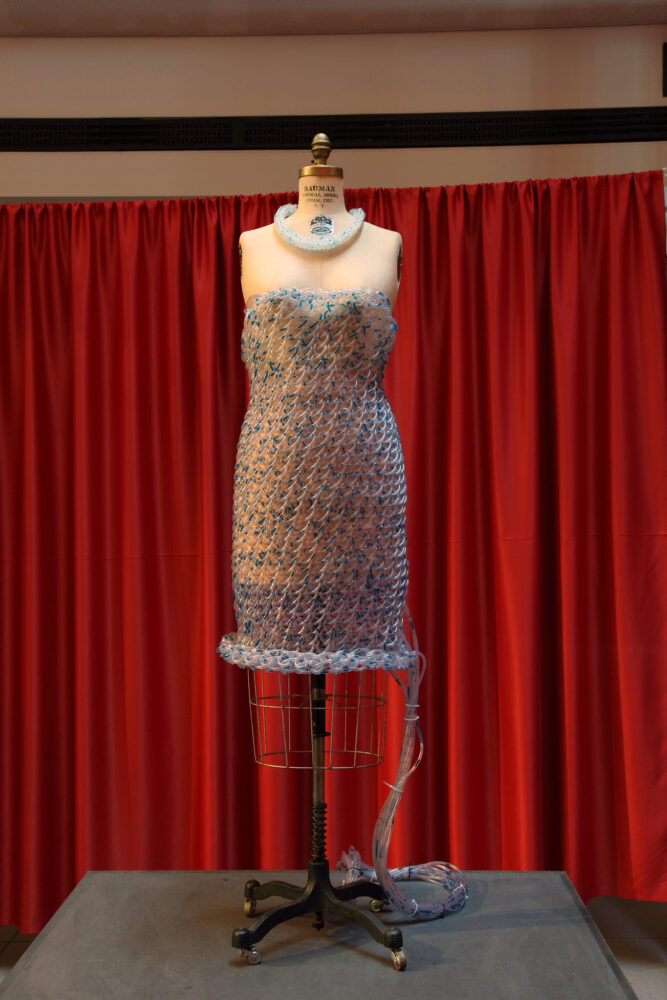
Fluid Dress“Fluid Dress” is a designer garment that enables its wearer to spontaneously display brief messages or express moods. The dress is made of 180 meters of clear plastic tubing that was woven on a loom developed by the artist himself. Via a computer hooked up to a pump and valve, the wearer determines both the color of the fluid and the proportion of air to fluid pumped into the tubing. The result is a dynamically pulsating dress that reflects the wearer’s current mood.
Ars Electronica Futurelab (AT)
The World in 100 Years (2010)
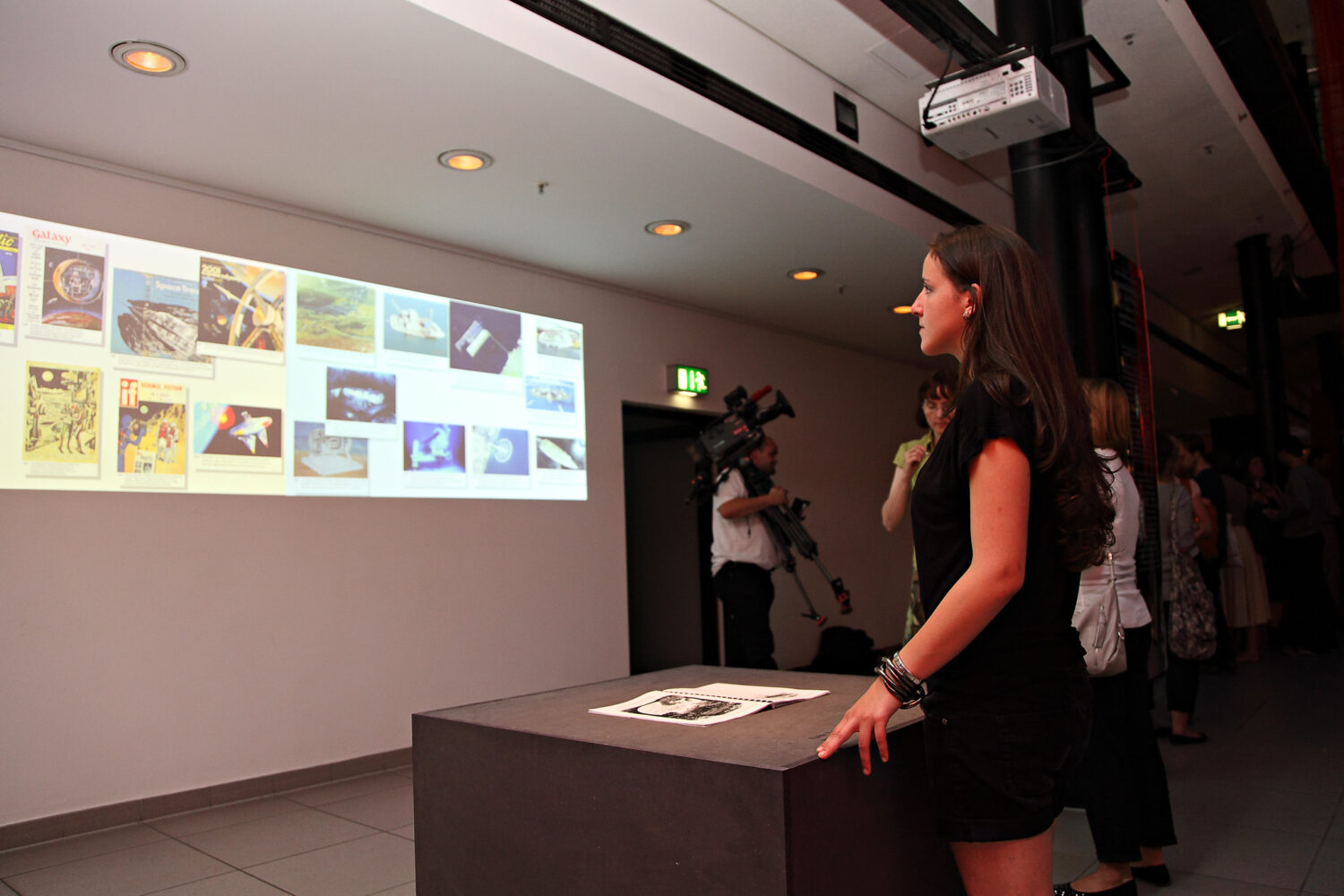
Houses that rotate to keep facing the Sun, artificial islands in the sea, space exploration and the universal library—some of the visions of the future engendered in the late 19th and early 20th centuries seem amazingly in tune with the times today. “The World in 100 Years” is an interactive installation by the Ars Electronica Futurelab that compares and contrasts the futuristic visions of French writer, draftsman, painter and caricaturist Albert Robida (1848-1926) with the visions of the future making the rounds today.
Peter Ablinger (AT), Winfried Ritsch (AT), Thomas Musil (AT)
Deus Cantando (God, singing) for computer-controlled piano and screened text (2009)

“Deus Cantando” plays with the interpretive capacities of the human brain. Specially developed transcription software makes it possible to reconstruct the frequency spectrum of a spoken text by means of a piano. Winfried Ritsch’s “automated pianist” plays this “composition” with consummate precision, whereby each one of its 88 electromechanical fingers is capable of up to 16 keystrokes per second. But it’s the interpretive capacities of the human brain that make it possible to convert what were initially abstract musical structures into a sequence of spoken words. In this very unique way, the machine recites the 2009 Declaration of the International Environmental Criminal Court that was founded at the World Venice Forum pursuant to an initiative of Adolfo Pérez Esquivel and the Dalai Lama.
Ars Electronica Futurelab (AT)
Shadowgram (2010)

“Shadowgram” is a form of social brainstorming developed by the Ars Electronica Futurelab. A person stands in front of an illuminated screen and is photographed. The result is a shadow of his/her silhouette. This picture is then printed out as a miniature sticker and applied to a “map” whose topography is studded with drawings of devices, machines, robots and androids. The particular body language of the silhouette, a speech balloon containing a brief statement, and the respective thematic cluster coalesce into a message. “Shadowgram” was very enthusiastically received at prior showings in Tokyo, Venice and Linz.
Christa Sommerer (AT), Laurent Mignonneau (FR)
Life Writer (2006)
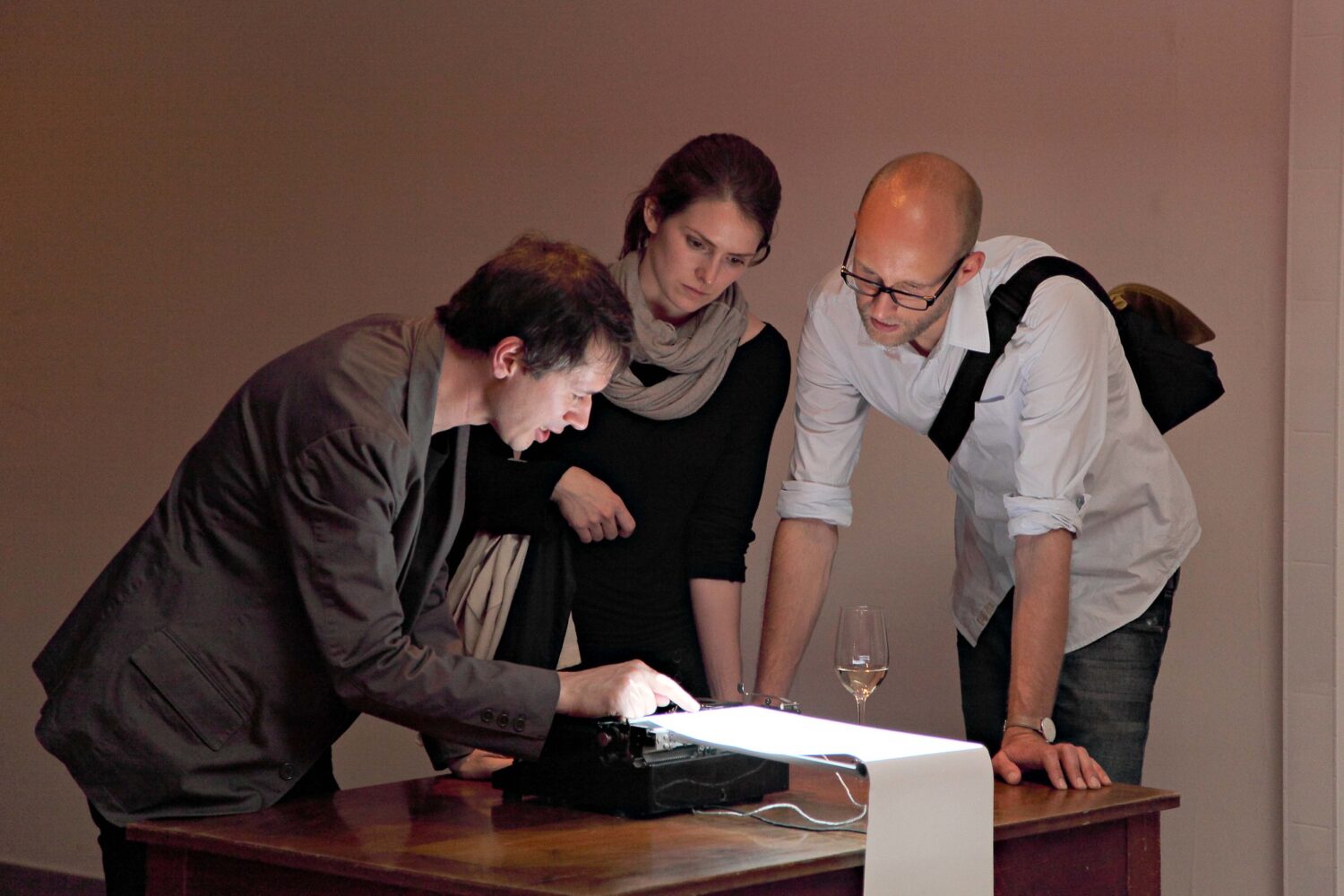
“Life Writer” is an interactive typewriter that creates artificial life. Each typed-in text corresponds to a genetic code that engenders visual creatures with their own metabolism sequences and reproductive cycles. The creatures then scurry about trying to find blocks of text they can gobble up. As soon as they’re sated, they reproduce the texts they’ve eaten and thus fill up the paper again. “Life Writer” stands for a process in which thoughts originate, develop further on their own, and reconfigure themselves. At the same time, this work raises questions about patterns of interaction among human beings and increasingly “intelligent” machines.
Leo Peschta (AT)
The Chronograph (2010)

“The Chronograph” notes the “acoustic moment.” The louder the people around it talk and the more active they are, the deeper the grooves are that the device etches into the wooden plate onto which it’s mounted. In going about this, the hand of “The Chronograph” moves a couple of degrees per minute. In this way, all acoustic events of the day are captured and visualized.
Ben Cowden (US)
Eating My Cake and Having It Too (2007), Kissing Machine (2008), An Elaboration of a Shortcoming (2007)
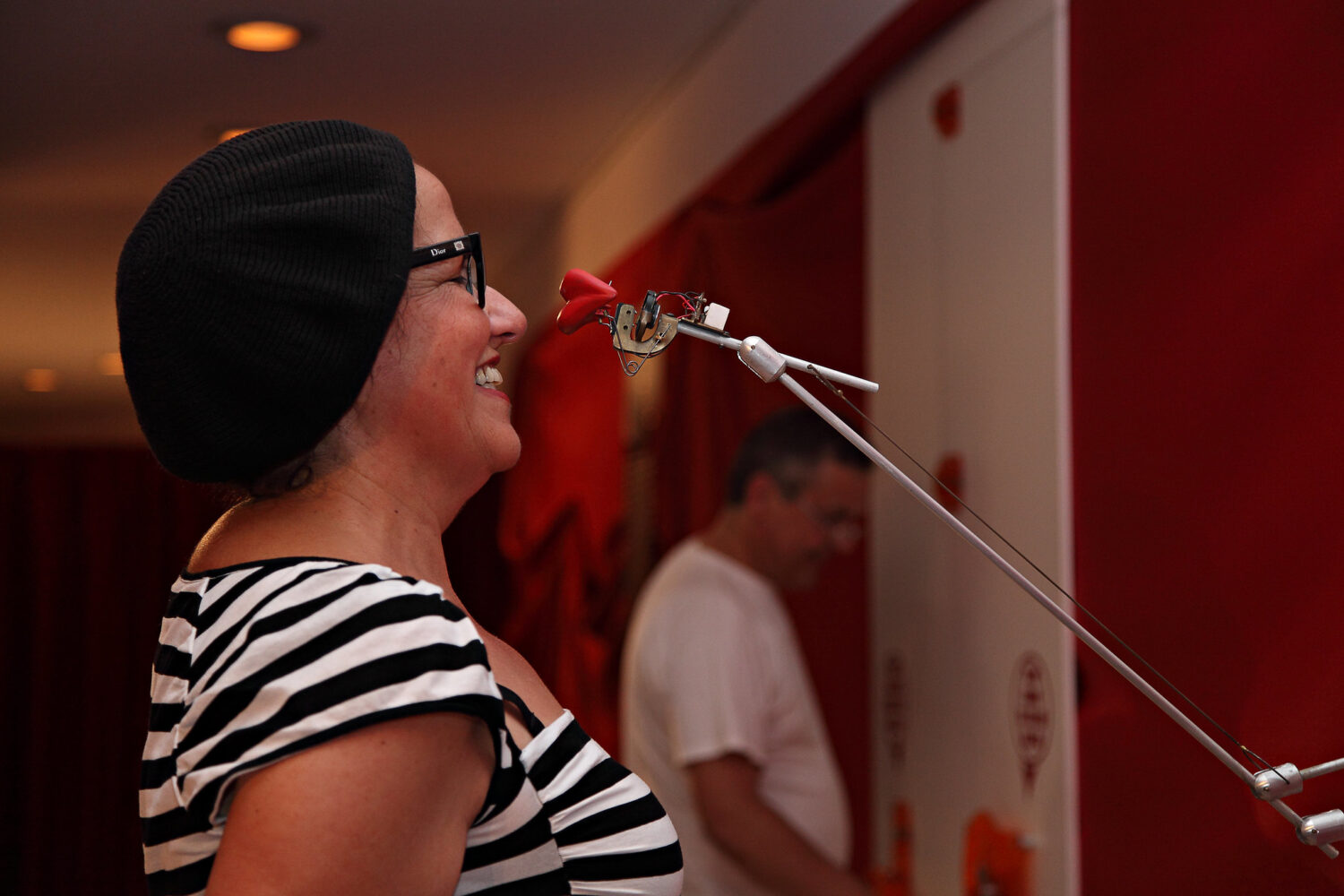
Ben Cowden claims to have never understood the phrase “You can’t have your cake and eat it too.” To him, it seems that eating a piece of cake is the ultimate form of possessing it. Inspired by this thought, Ben Cowden builds copies of individual parts of the human body like our tongue or our lips and depicts them in a way that is so isolated from the rest of what naturally belongs to them that they are placed in a totally absurd context. In this spirit, a mechanically controllable tongue licks a lollypop, (“Eating My Cake and Having It Too”) and oversized red lips dispense hot kisses and an enthusiastic “I love you!” (“Kissing Machine”). Then Ben Cowden turns his attention to the countless sensory impressions that are constantly bombarding us and the comparatively slow pace at which our sensory organs, nerves and brain process them (“An Elaboration of a Shortcoming”).
Tom Wilkinson (UK)
Light Wave (2009)

Light Wave is a wave-shaped moving mechanical sculpture. 95 glass rods are rocked by a helical cam shaft in a slow, reciprocating motion that resembles a perfect sine wave. Gravity and kinetic energy engage in a state of equilibrium enabling the ‘blades’ of glass weighing almost half a ton to be set in motion by a small motor whose output is the equivalent of an ordinary household light bulb.
Ursula Neugebauer (DE)
tour en l’air (1998)

“Turn in the air” is the meaning of this automated ballet’s title. One after the other, the floor-length red gowns begin to rotate. They spin so fast that the skirts start to puff out and look as if they were being worn by a human dancer whose turns were whirling them through the air. These computer-controlled tops rotate incessantly like dancing Dervishes until suddenly, as if by silent command, they cease and remain still again.
Michael Pflüger (DE)
Böser Vogel (2008), Blöder Vogel (1997), Bösartige Maschine (1995)

The operation of Michael Pflüger’s ironic metal sculptures is as user-friendly as can be, but the reactions of his machines could hardly be more vicious. “Böser Vogel” (Bad Bird) nastily pecks at the hand that disturbs its sullen repose. “Blöder Vogel” (Stupid Bird), on the other hand, disabuses us of the notion that maximum input always brings out maximum output. And then there’s “Bösartige Maschine” (Malicious Machine), which illustrates that the function and meaning of certain constructions aren’t always apparent at first glance. When an installation visitor innocently throws its metal switch, the machine’s red tuft comes down on the intrusive hand faster than it can be yanked away. Thus, it is in a playfully ironic way that Michael Pflüger investigates the often suspected but never proven phenomenon that machines have a life of their own, and the ascription of human attributes to them.
